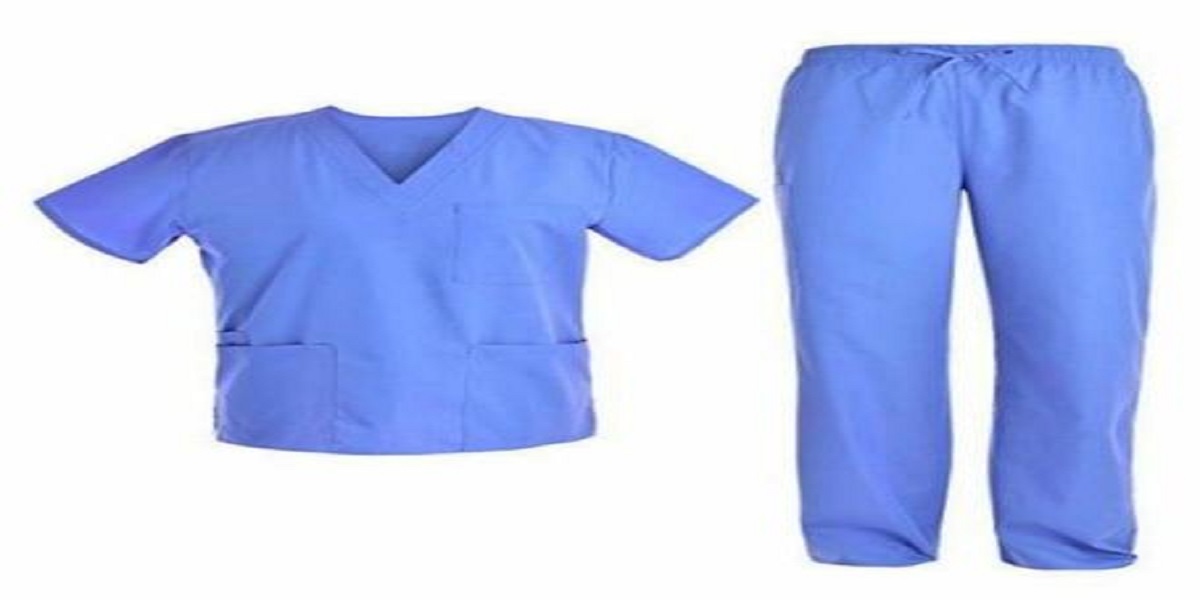
Sustainable OT Dress for Clinical Applications
The clinical settings require several special medical equipment and accessories for performing any clinical examination or procedure. These have led to a significant improvement in the present healthcare services all around the world. These are manufactured in large quantities to meet the demand of the present time.
Among the different medical devices and attires used, clinical apparels have an important role, especially in scenarios where invasive procedures like surgeries are performed. The surgical procedures require utmost sterility in the immediate surroundings and thus the gowns have to be germ-free and sterile to minimize the risk of infecting any patient undergoing surgery. The disposable dresses were developed to fulfill this purpose. The management of the used gowns is challenging.
The disposable gowns are usually made up of non-woven materials like polypropylene which are both fluid-resistant and stain-resistant. But these when worn for long durations can also cause discomfort to the surgeons performing various procedures in the operation theatres. The disposable ones are also linked with the heavy burden of solid waste. The energy and blue water usage for its production were also in excess due to the large number of products being manufactured.
CLASSIFICATION OF THIS PROTECTIVE APPAREL USED IN HEALTHCARE SETTINGS
As the pandemic continues, the use of OT dress is now becoming popular. They are part of PPE. At this time, the demand for gowns from the public is also increasing. These gowns can significantly help people to protect themselves.
Surgical Gown: Any level of risk can be covered with surgical gowns. It is a personal protective garment that can be worn by medical personnel during surgery to protect the patient and the personnel from any possible transmission of microorganisms. All gowns must be labeled.
Medical Isolation Gowns: These are used when there is a medium to greater risk of contamination. There is a need for larger critical zones. All areas of the gown except (bindings, cuffs, and hems) are considered critical zones of protection. All seams must be protected as well.
Non-Surgical Gowns: They are used to protect the wearer from the transfer of microorganisms and body fluids in low or minimal-risk situations. When there is a medium to very enhanced risk of contamination, they are not worn during surgical procedures or invasive procedures.
POINTS TO CONSIDER WHILE CHOOSING THIS MEDICAL ATTIRE
One should consider three things when choosing gowns for healthcare settings. Purpose: Who will be wearing the gown, in what setting will they be working, and what are the possible types of risks? Answers to those questions, determine what type of gowns one needs. Materials: What are isolation gowns made of, mostly these gowns are made from polyethylene. Reusable isolation gowns are made from synthetic materials, such as polyester. They can also be latex-free.
Selecting the correct level of gown depends on the protection needed for the circumstances. For patients with suspected or confirmed cases of COVID-19, please use non-sterile gowns, which are used for routine patient care in healthcare settings. For medical professionals engaging in activities where the risk of bodily fluid exposure is minimal, gowns that claim minimal levels of barrier protection can be used. For situations where medium to high-risk levels of contamination and the need for a large critical zone, these gowns that claim moderate to high barrier protection can be used.
The most important risk with using these gowns is as already mentioned the spread of cross-infection on reuse. To overcome this problem proper disinfection processes have to be performed on used OT dresses. The soiled dresses are first washed in laundry using water and detergent and then disinfected using disinfecting solutions. After that, they are autoclaved at high temperatures to kill any remnant germs or microbes present in them. The sustainable gown is made up of special materials that are heat resistant to withstand the high temperatures of the autoclave process. After it has been used a reasonable number of times, these gowns can be disposed of by burning them in an incinerator, sometimes these are disposed of in landfills. These gowns can also be used in other industries thus producing almost zero solid waste.
CONCLUSION
There has been research that shows that the use of these gowns in the healthcare sector is associated with a reduced amount of waste produced in terms of mass and the emission of greenhouse gases from combustion has also reduced. The amounts of energy resources and water resources used for manufacturing have also significantly reduced when these sustainable apparel are used.
Thus the use of reusable sustainable dresses has proven to be environmentally friendly and also has reduced the economic burden of its production in the long term. However, there are situations where still reusable gowns are to be used for example in very high-risk surgeries.
Leave a Comment
© Copyright © 2024 gwsmed.com | GWS Surgicals LLP. All rights reserved.
| |




Comment (0)
No Comments Yet. Be the first one.